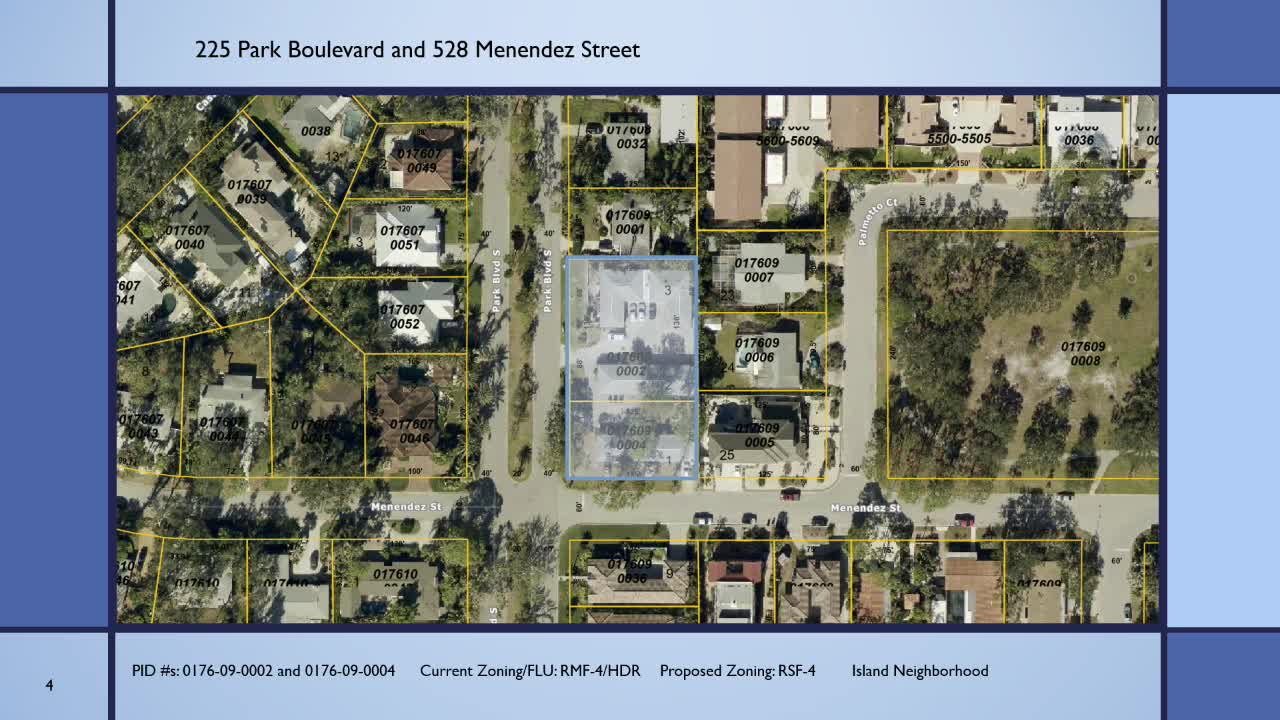Property owner Boroff plans to develop family lots on Venice apartment district site
June 10, 2025 | Venice, Sarasota County, Florida
This article was created by AI summarizing key points discussed. AI makes mistakes, so for full details and context, please refer to the video of the full meeting. Please report any errors so we can fix them. Report an error »

During a recent Venice City Council meeting, discussions centered on a proposed rezone of a 0.6-acre property currently housing ten multifamily units. The property owner, Mr. Boroff, expressed a desire to transition the land to his three children, allowing them the opportunity to build single-family homes in the future. This proposal has sparked a debate regarding the implications of the city’s comprehensive plan, particularly policy LU 1.2.3, which permits lower density development on properties smaller than one acre.
Council members reflected on the historical context of the area, often referred to as the "apartment district." Questions arose about whether this designation was officially recognized or simply a product of local evolution. The discussion highlighted the mixed-use nature of the neighborhood, which includes single-family homes, multifamily units, and commercial properties.
A significant point raised was the impact of recent changes to the land development code, which previously allowed for multifamily development but has since restricted such opportunities. This shift has left property owners like Mr. Boroff with limited options for future development, as the economic feasibility of multifamily projects has diminished due to rising land costs and height restrictions.
Council members emphasized the need for a balanced approach to development, suggesting that if the city truly aims to promote multifamily housing, it must consider areas where taller buildings could be permitted. The conversation underscored the tension between preserving historical plans and adapting to contemporary housing demands.
As the council deliberates on this rezone request, the outcome could set a precedent for future development in Venice, particularly in how the city navigates its historical roots while addressing modern housing needs. The next steps will involve further discussions and potential adjustments to the comprehensive plan to better align with the community's evolving landscape.
Council members reflected on the historical context of the area, often referred to as the "apartment district." Questions arose about whether this designation was officially recognized or simply a product of local evolution. The discussion highlighted the mixed-use nature of the neighborhood, which includes single-family homes, multifamily units, and commercial properties.
A significant point raised was the impact of recent changes to the land development code, which previously allowed for multifamily development but has since restricted such opportunities. This shift has left property owners like Mr. Boroff with limited options for future development, as the economic feasibility of multifamily projects has diminished due to rising land costs and height restrictions.
Council members emphasized the need for a balanced approach to development, suggesting that if the city truly aims to promote multifamily housing, it must consider areas where taller buildings could be permitted. The conversation underscored the tension between preserving historical plans and adapting to contemporary housing demands.
As the council deliberates on this rezone request, the outcome could set a precedent for future development in Venice, particularly in how the city navigates its historical roots while addressing modern housing needs. The next steps will involve further discussions and potential adjustments to the comprehensive plan to better align with the community's evolving landscape.
View full meeting
This article is based on a recent meeting—watch the full video and explore the complete transcript for deeper insights into the discussion.
View full meeting